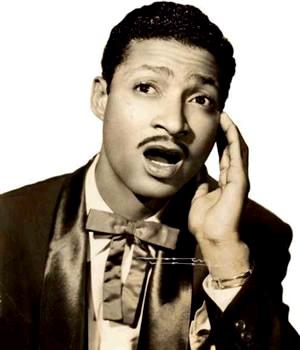Информация об исполнителе
Beny More (sometimes Benny Morй, Benny Morй or Benny More) (August 24, 1919 February 19, 1963) is considered by many fans of Cuban music as the greatest Cuban singer of all time.
He was gifted with an innate musicality and fluid tenor voice which he colored and phrased with great expressivity. Mor™ was a master all the genres of Cuban music, including son montuno, mambo, guaracha, guajira, cha cha cha, afro, canciЈn, guaguancЈ, and bolero.
The eldest of eighteen children, Mor™ was born in Santa Isabel de las Lajas in the former province of Las Villas in central Cuba. In 1936, at age seventeen, he left Las Lajas for Havana. His first breakthrough was winning a radio competition. He then joined Trнo Matamoros (later known as Conjunto Matamoros, with which he remained several years, making a number of recordings.
In 1945 Mor™ went with Conjunto Matamoros to Mexico, where he performed in two of the most famous cabarets of the age, the Montparnasse and the Rќo Rosa. He made several recordings. Conjunto Matamoros returned to Havana, while Mor™ remained in Mexico, where he made several recordings for RCA Victor, together with the orchestra of Mariano MercerЈn: "Me voy pal pueblo" y "Desdichado". He also recorded with Perez Prado: "Bonito y sabroso", "Mucho corazЈn", "Pachito el che", and "Ensalada de mambo". He also recorded "Dolor carabalќ", which Mor™ considered his best composition recorded with P™rez Prado, and one he never wanted to re-record.
At the end of 1950, Mor™ returned to Cuba. He was a star in Mexico, Panama, Colombia, Brazil and Puerto Rico, but virtually unknown on the island. His first Cuban recording was "Bonito y Sabroso". Mor™ eventually decided to start his own orchestra, which he called Banda Gigante. In the years 1954 and 1955, Mor™'s group became immensely popular. In 1956 and 1957, it toured Venezuela, Jamaica, Haiti, Colombia, Panama, Mexico and the United States, where the group played at the Oscar ceremonies.
In the aftermath of the Cuban Revolution, many of Mor™'s colleagues emigrated. However, Mor™ preferred to remain in Cuba. He died in 1963 at age 43 of cirrhosis. An estimated 100,000 fans attended his funeral.
User-contributed text is available under the Creative Commons By-SA License and may also be available under the GNU FDL.
He was gifted with an innate musicality and fluid tenor voice which he colored and phrased with great expressivity. Mor™ was a master all the genres of Cuban music, including son montuno, mambo, guaracha, guajira, cha cha cha, afro, canciЈn, guaguancЈ, and bolero.
The eldest of eighteen children, Mor™ was born in Santa Isabel de las Lajas in the former province of Las Villas in central Cuba. In 1936, at age seventeen, he left Las Lajas for Havana. His first breakthrough was winning a radio competition. He then joined Trнo Matamoros (later known as Conjunto Matamoros, with which he remained several years, making a number of recordings.
In 1945 Mor™ went with Conjunto Matamoros to Mexico, where he performed in two of the most famous cabarets of the age, the Montparnasse and the Rќo Rosa. He made several recordings. Conjunto Matamoros returned to Havana, while Mor™ remained in Mexico, where he made several recordings for RCA Victor, together with the orchestra of Mariano MercerЈn: "Me voy pal pueblo" y "Desdichado". He also recorded with Perez Prado: "Bonito y sabroso", "Mucho corazЈn", "Pachito el che", and "Ensalada de mambo". He also recorded "Dolor carabalќ", which Mor™ considered his best composition recorded with P™rez Prado, and one he never wanted to re-record.
At the end of 1950, Mor™ returned to Cuba. He was a star in Mexico, Panama, Colombia, Brazil and Puerto Rico, but virtually unknown on the island. His first Cuban recording was "Bonito y Sabroso". Mor™ eventually decided to start his own orchestra, which he called Banda Gigante. In the years 1954 and 1955, Mor™'s group became immensely popular. In 1956 and 1957, it toured Venezuela, Jamaica, Haiti, Colombia, Panama, Mexico and the United States, where the group played at the Oscar ceremonies.
In the aftermath of the Cuban Revolution, many of Mor™'s colleagues emigrated. However, Mor™ preferred to remain in Cuba. He died in 1963 at age 43 of cirrhosis. An estimated 100,000 fans attended his funeral.
User-contributed text is available under the Creative Commons By-SA License and may also be available under the GNU FDL.
показывать / спрятать больше







 |
|



![VA - Cuba: I Am Time (1997) [FLAC (tracks + .cue)] VA - Cuba: I Am Time (1997) [FLAC (tracks + .cue)]](cache/thumbnail20/browse686500.jpg)
![VA - Dexter: Season 5 / Декстер (2011) [FLAC (tracks + .cue)] VA - Dexter: Season 5 / Декстер (2011) [FLAC (tracks + .cue)]](cache/thumbnail39/browse160810.jpg)

![VA - Dexter: Music From The Showtime Original Series / Декстер (2007) [FLAC (tracks + .cue)] VA - Dexter: Music From The Showtime Original Series / Декстер (2007) [FLAC (tracks + .cue)]](cache/thumbnail20/browse152710.jpg)